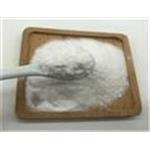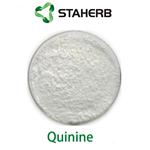What is Quinine?
Sep 20,2023
Descriptionjuan
Quinine is a white crystalline alkaloid occurring naturally in the bark of the cinchona tree, which grows in South America. For almost 300 years, it has been the only treatment for malaria and is still used today to treat some forms of the disease caused by the parasite Plasmodium falciparum. The formula of Quininea is C20H24N2O2, its molecule consists of two major fused-ring systems: the aromatic quinoline and the bicyclic quinuclidine. Quinine has many medicinal applications due to its fever-reducing, painkilling, and anti-inflammatory properties.

Uses
Its most famous use is as an antimalarial. Quinine derivatives are often developed using and chemically modifying the compound quinine from nature, which is a new drug for malaria efficacy. The quinoline moiety is responsible for the antimalarial properties of quinine. Studies have found that quinoline-based antimalarial compounds inhibit the formation of synthetic hemozoin (b-hematin)[1]. Artemisinin and artemisinin-derived-quinine combination therapies are effective in the fight against malaria but have poor patient compliance. Modifications of the vinyl group are also a good method, the synthed quinine-derived drug hybrids showing enhanced antimalarial properties[2].
Another generally known quinine property is its bitter taste. Nowadays, it is widely used as a favor ingredient for bitterish drinks, and food products, yet in limited concentration. Although quinine can be synthesized, cinchona trees remain a much cheaper source of this alkaloid on the industrial scale[3]. Quinine can be used in high-temperature liquid-solid extraction which is currently the most commonly used method for separating plant components. Some quinine separation procedures involve alcohol/water mixtures or acidified water as extraction media.
References
[1] Gordon M, et al. Quinine disposition during malaria and during induced fever. Clinical Pharmacology & Therapeutics, 1976; 19: 459-467.
[2] Andrzej L, et al. Possibility of quinine transformation in food products: LC–MS and NMR techniques in analysis of quinine derivatives. European Food Research and Technology, 2017; 244: 105–116.
[3] Eric P, et al. Quinine disposition in globally malnourished children with cerebral malaria. Clin. Pharmacol. Ther, 1999; 65: 500-510.
- Related articles
- Related Qustion
- Mechanism and side effects of Quinine Apr 15, 2022
Quinine is a medication used to treat malaria and babesiosis.This includes the treatment of malaria due to Plasmodium falciparum that is resistant to chloroquine when artesunate is not available.








